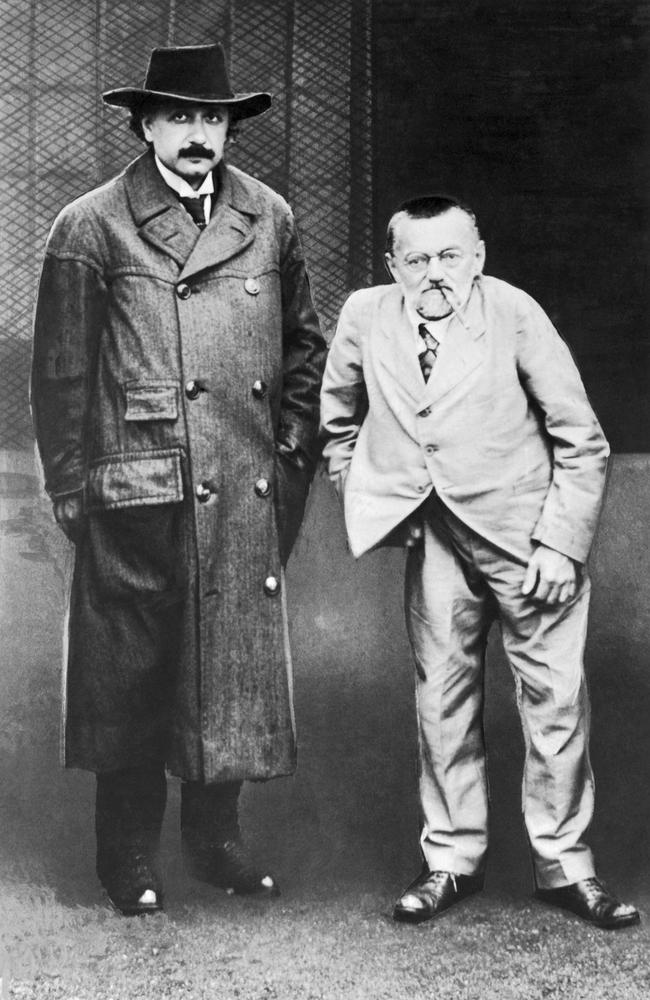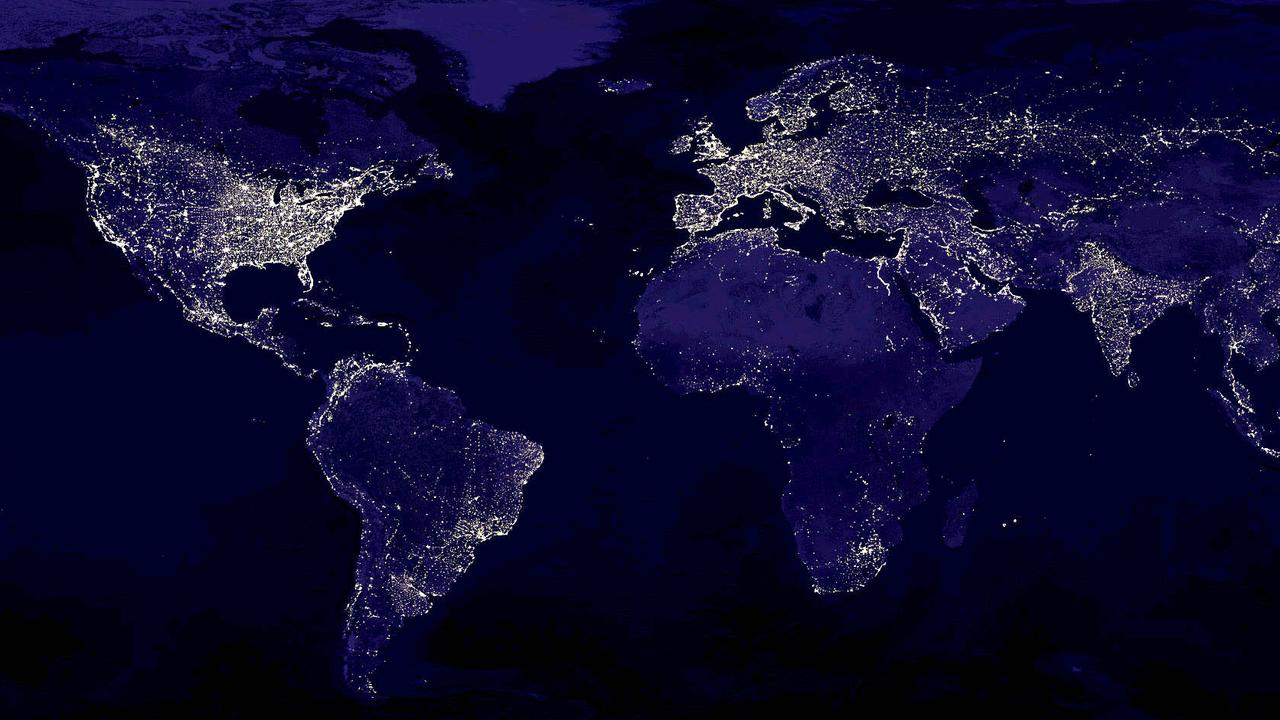Weird 2023 predictions made 100 years ago – and how many came true
Newspapers in 1923 made a habit of making wild 100-year predictions – but some actually got close.
Innovation
Don't miss out on the headlines from Innovation. Followed categories will be added to My News.
Eerie predictions for 2023 have emerged from newspaper futurists, with some nearing the mark – and others missing wildly.
Dr Charles Proteus Steinmetz, a German-born American mathematician and electrical engineer with the famous General Electric Company, was one of those – and arguably a viral star by 1900s standards.
He is credited as a critical figure in the US’s expansion of the electric power industry.
Newspapers worldwide were keen to hear how he saw the dawn of electricity impacting humanity well into the future.
A prime example is page six of The Bundaberg Mail, dated December 22, 1923.
The article headlined ‘In 2023’ reveals some interesting insights from one of the pioneers of alternating current.
Want to stream your news? Flash lets you stream 25+ news channels in 1 place. New to Flash? Try 1 month free. Offer available for a limited time only >

“Dr Charles Proteus Steinmetz, the eminent electrical engineer of the General Electric Company, successor-elect of Thomas A. Edison, has brought down a myriad of humming batteries about his head by prophesying that by the year 2023, mankind will not have to work more than four hours a day,” the article read.
Let’s mark that one down as a miss.
However, less than half of American homes in 1923 had electrical power, and the dawn of electricity was cause for untethered optimism.
“Electricity or other forces will do the rest,” it continued.
But Americans weren’t happy with the outlook.
“What can anybody do with 20 hours of daily leisure after the eight hours of sleep have been deducted?” the article lamented.
“Dr Steinmetz is being challenged from all parts of the country.
“He is politically a socialist, and he is asked whether the four hours’ work day will bring with it compulsory amusements enforced by the government.”
The article publishes the argument: “Even under present conditions, when leisure is limited, people do not know what to do with their few spare hours.
“They turn to jazz and work harder on a ballroom floor than in their offices, in a whirling effort to forget that they have a little idleness to dissipate.”

“It has already become the classic thing for elderly American businessmen to die as soon as possible after their energetic sons succeed to the business.”
Yes, you read that right, keep working, or you might die according to some.
“Only four hours of business per day! That is to say, only four hours of self expression; Only one-sixth of the day to hustle; Only 16 per cent of life to make money,” it continued.
It concluded: “So say Dr Steinmetz’ critics. By what right could (workers) be deposed from their workbenches?”
“Revolution would follow. Perhaps, indeed, the precious formulae of the electrical and atomic engineers would be destroyed, and mankind would return to the days of freedom when there was work for all forever.”
The writer would no doubt be glad to hear most of us are still working far longer than four-hour days, though there are now rumblings of a four-day work week.
A List of Predictions Made in 1923 About 2023
— Paul Fairie (@paulisci) January 1, 2023
🧵
University of Calgary researcher and historical newspaper specialist Paul Fairie recently pointed out some other exciting predictions made by century-old newspapers.
Dr Steinmetz gets another mention.
He said in addition to the four-hour work day; every city would be a “spotless town” – thanks to electricity – somehow.
Another one that perhaps is fractionally true is the prediction that today’s women will blacken their teeth and shave their heads while men shockingly wear curls.
“It is now predicted that by the year 2023 – only a mere little stretch of a century ahead – women will probably be shaving their heads!” the article exclaimed.

“And the men will be wearing curls. Also the maidens may pronounce it the height of style in personal primping to blacken their teeth. Won’t we be pretty?”
One anthropologist in a separate article also forecasted that men would curl their hair with his statement supposedly based on a “trend of masculine and feminine styles.”
Mr Fairie pointed out that the Minneapolis Journal reported a bold prediction for how we would fuel our futuristic air travel.
“It is an attractive prophecy that Glenn Curtiss, the airplane authority, gives of air flight,” the article read.
“He predicts that by the year 2023, gasoline as a motive power will have been replaced by radio and that the skies will be filled with myriad craft sailing over well-defined routes.”
According to one clipping from an article titled ‘Fewer Doctors and Present Diseases Unknown; All People Beautiful’, we should all be beautiful by now.
“Beauty contests will be unnecessary as there will be so many beautiful people that it will be almost impossible to select winners. The same will apply to baby contests,” it asserted.
Other articles said in 2023, the earth would be full of centenarians.
“By 2023, the average life of man could be increased to 100 years. In individual cases, it could be increased to 150, perhaps 200 years,” one read.
“A scientist says a century from now, the average length of human life will be 300 years,” predicted another.


In reality, in Australia, we came up almost a couple of decades short, with our average lifespan at 83.2 years – although we’re over a decade better than the global benchmark of 72.75 years.
Mr Fairie also found an article predicting a solution to cold kidneys – because apparently, that’s a problem.
“Kidney cosies” will be worn to protect the kidneys on chilly days, just the same as a teapot in the north is kept warm by a “tea cosy,” the article read.
One of the more accurate century-old predictions was that the US would hit a population of 300 million (currently 331.9 million). In 1923, the population was 111.9 million.

“The population of the United States in the year 2023, probably 300,000,000, will imply an immense progress in the drainage of our low lands, in the irrigation of arid lands,” it said.
Canada, however, fell short of its predicted population of 100 million (currently 38.2 million).
Another got close when predicting the flight time between the US and Germany in 100 years, though we’ve reached almost half that.
“A new Polar airline is opened, making flights across the north pole from Chicago to Hamburg possible in 18 hours,” one clipping says.

You’ve no doubt heard someone say, “newspapers are dying”.
Well, it appears that conversation has been going on for a while.
“In reading a forecast of 2023 when many varieties of aircraft are flying thru the heavens, we do not begin the day by reading the world’s news, but by listening to it for the newspaper has gone out of business more than half a century before,” one clipping uncovered Mr Fairie claims.
Expectations of our scientific advancements have yielded mixed outcomes.
One paper said we would have the cure to cancer this year, while another said we would be communicating via watch-sized radio telephones – which isn’t far off.

“By 2023, there’ll be no mail between New York and San Francisco,” the clipping read.
“Pittsburgh and London concerns will record, on talking films, orders from merchants in Peking, and 1,000-mile-an-hour freighters will make deliveries of goods before sunset.
“Watch-size radio telephones will keep everybody in communication with the ends of the earth.”
More Coverage
Originally published as Weird 2023 predictions made 100 years ago – and how many came true









